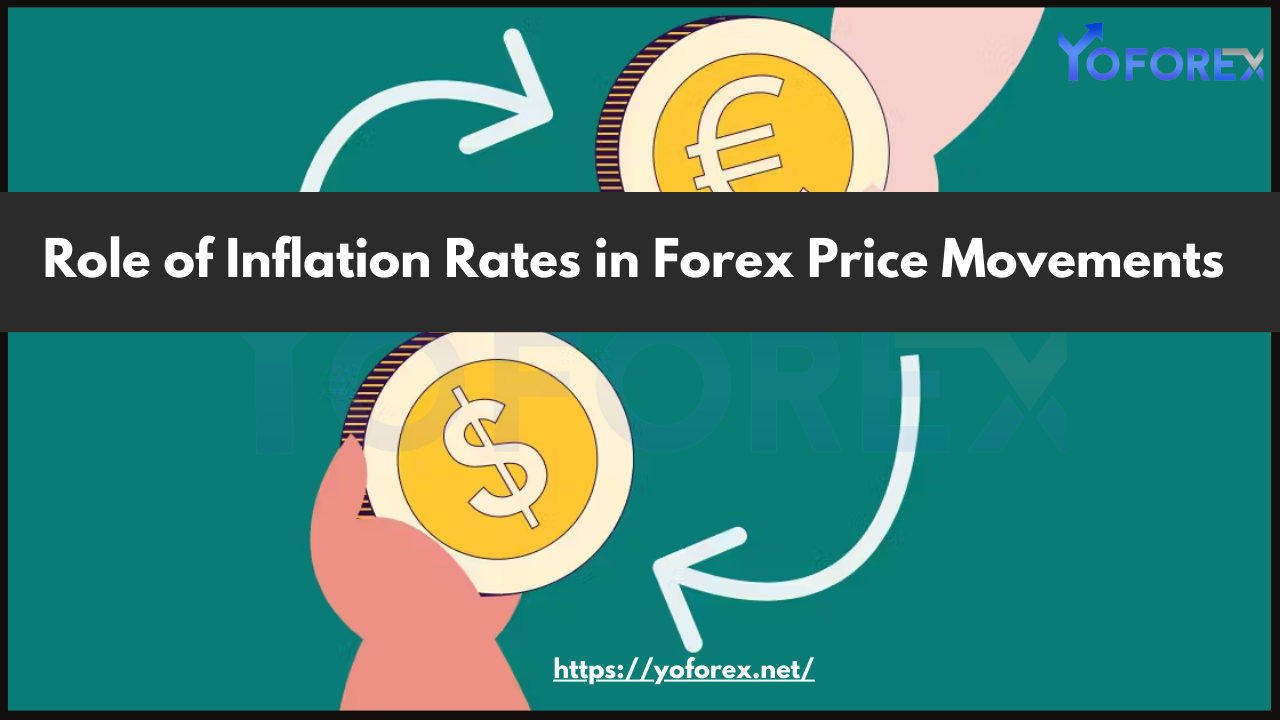Inflation rates play a pivotal role in influencing forex price movements. As one of the core indicators of economic health, inflation impacts a country’s currency value by shaping central bank policies, investor sentiment, and market behavior. For forex traders, understanding how inflation rates affect currency prices is essential for making informed trading decisions.
This blog delves into the role of inflation rates in forex price movements, exploring their impact, mechanisms, and strategies to navigate these changes.

What is Inflation?
Inflation refers to the rate at which the general level of prices for goods and services in an economy rises over a specific period. Moderate inflation is a sign of a healthy economy, but excessive inflation or deflation can disrupt economic stability.
- High Inflation: Reduces purchasing power, erodes savings, and may lead to aggressive monetary tightening.
- Low Inflation or Deflation: Signals weak economic demand and may prompt central banks to introduce stimulus measures.
How Inflation Rates Influence Forex Markets
1. Impact on Central Bank Policies
Central banks closely monitor inflation rates as they craft monetary policies. Inflation that deviates significantly from a central bank’s target (often 2% in developed economies) can prompt actions that influence currency prices:
- Rising Inflation:
- Central banks may raise interest rates to curb inflation, which often strengthens the currency as higher rates attract foreign investment.
- Falling Inflation:
- Central banks may lower interest rates or implement quantitative easing to stimulate the economy, weakening the currency.
2. Interest Rate Differentials
Inflation rates impact interest rate differentials between countries, a key driver of forex movements. Traders often compare the interest rates of two currencies in a pair to assess their relative attractiveness:
- Higher interest rates, driven by higher inflation, can attract investors seeking better returns, strengthening the currency.
- Conversely, lower interest rates may lead to capital outflows, weakening the currency.
3. Purchasing Power Parity (PPP)
Inflation rates affect a currency’s purchasing power, which can influence its long-term exchange rate:
- Countries with lower inflation rates tend to see their currencies appreciate relative to countries with higher inflation rates.
- This phenomenon is explained by the Purchasing Power Parity (PPP) theory, which states that exchange rates adjust to equalize the cost of goods and services across countries.
4. Market Sentiment and Speculation
Inflation data releases can significantly impact forex market sentiment and speculative behavior:
- Positive Surprises:
- Inflation exceeding expectations may signal a robust economy and lead to currency appreciation.
- Negative Surprises:
- Inflation falling short of forecasts may indicate economic weakness, causing the currency to depreciate.
Key Inflation Indicators for Forex Traders
Forex traders rely on several inflation-related indicators to gauge market movements:
- Consumer Price Index (CPI):
- Measures the average change in prices paid by consumers for goods and services. A primary indicator of inflation.
- Producer Price Index (PPI):
- Tracks changes in prices received by producers. Often considered a leading indicator of consumer inflation.
- Core Inflation:
- Excludes volatile food and energy prices, providing a clearer view of underlying inflation trends.
- Import and Export Prices:
- Reflect the impact of international trade on domestic inflation.
Real-Life Examples of Inflation’s Impact on Forex Markets
1. The U.S. Dollar (USD):
- When U.S. inflation rates rise above expectations, the Federal Reserve often raises interest rates, boosting the USD as foreign investors seek higher returns on dollar-denominated assets.
2. The Euro (EUR):
- Persistent low inflation in the Eurozone has historically led the European Central Bank (ECB) to maintain lower interest rates, weakening the EUR relative to other currencies.
3. Emerging Market Currencies:
- High inflation rates in emerging markets often lead to currency depreciation as foreign investors seek stability in developed markets.
Trading Strategies Around Inflation Data
1. Monitor Economic Calendars
Stay informed about inflation-related data releases and central bank meetings. Key events to watch include:
- Monthly CPI and PPI reports.
- Central bank statements and press conferences.
2. Trade Based on Expectations vs. Reality
Forex markets often react strongly to inflation data that deviates from expectations:
- Higher-than-Expected Inflation: Buy the currency in anticipation of rate hikes.
- Lower-than-Expected Inflation: Sell the currency due to potential rate cuts.
3. Focus on Interest Rate Differentials
Analyze the interest rate outlook of the countries whose currencies you’re trading. Pair a currency from a high-interest-rate country with one from a low-interest-rate country to exploit the differential.
4. Combine Technical and Fundamental Analysis
Use technical analysis to identify entry and exit points while incorporating inflation data and central bank policies to confirm your trades.
Risks and Challenges
1. Lagging Impact
Inflation’s effects on forex markets are not always immediate, as central banks may take time to adjust their policies.
2. Complex Interactions
Inflation interacts with other economic variables, such as employment and GDP growth, making its impact on forex markets multifaceted.
3. Market Overreaction
Forex markets may overreact to inflation data releases, leading to temporary volatility that doesn’t reflect long-term trends.
Conclusion
Inflation rates are a cornerstone of forex price movements, influencing currency values through their effects on central bank policies, interest rate differentials, and market sentiment. For forex traders, understanding the role of inflation and staying informed about key indicators is essential for navigating this complex yet rewarding market.
By combining fundamental insights with technical strategies and maintaining a disciplined approach, traders can effectively leverage inflation data to identify opportunities and manage risks in the forex market.

